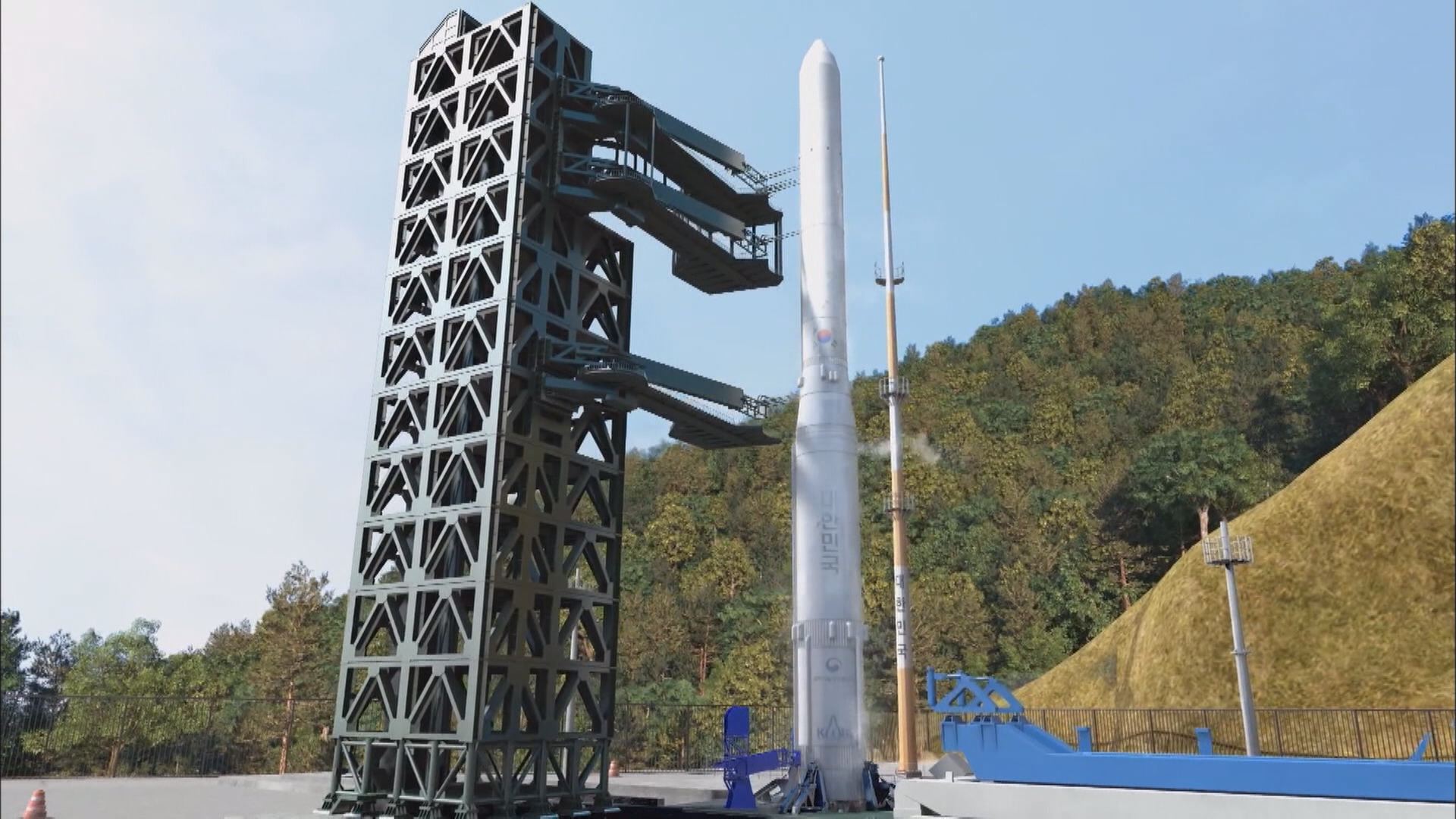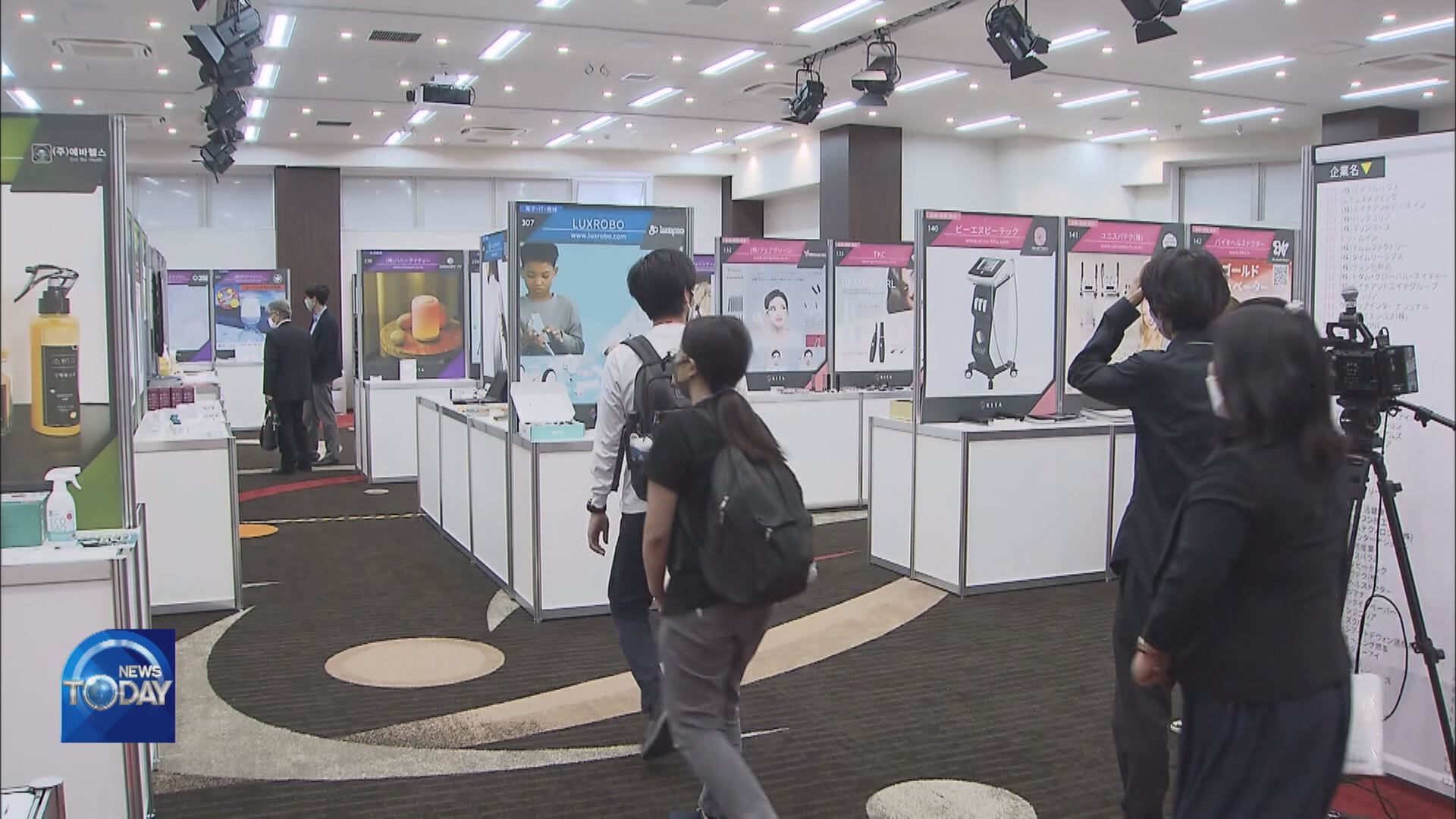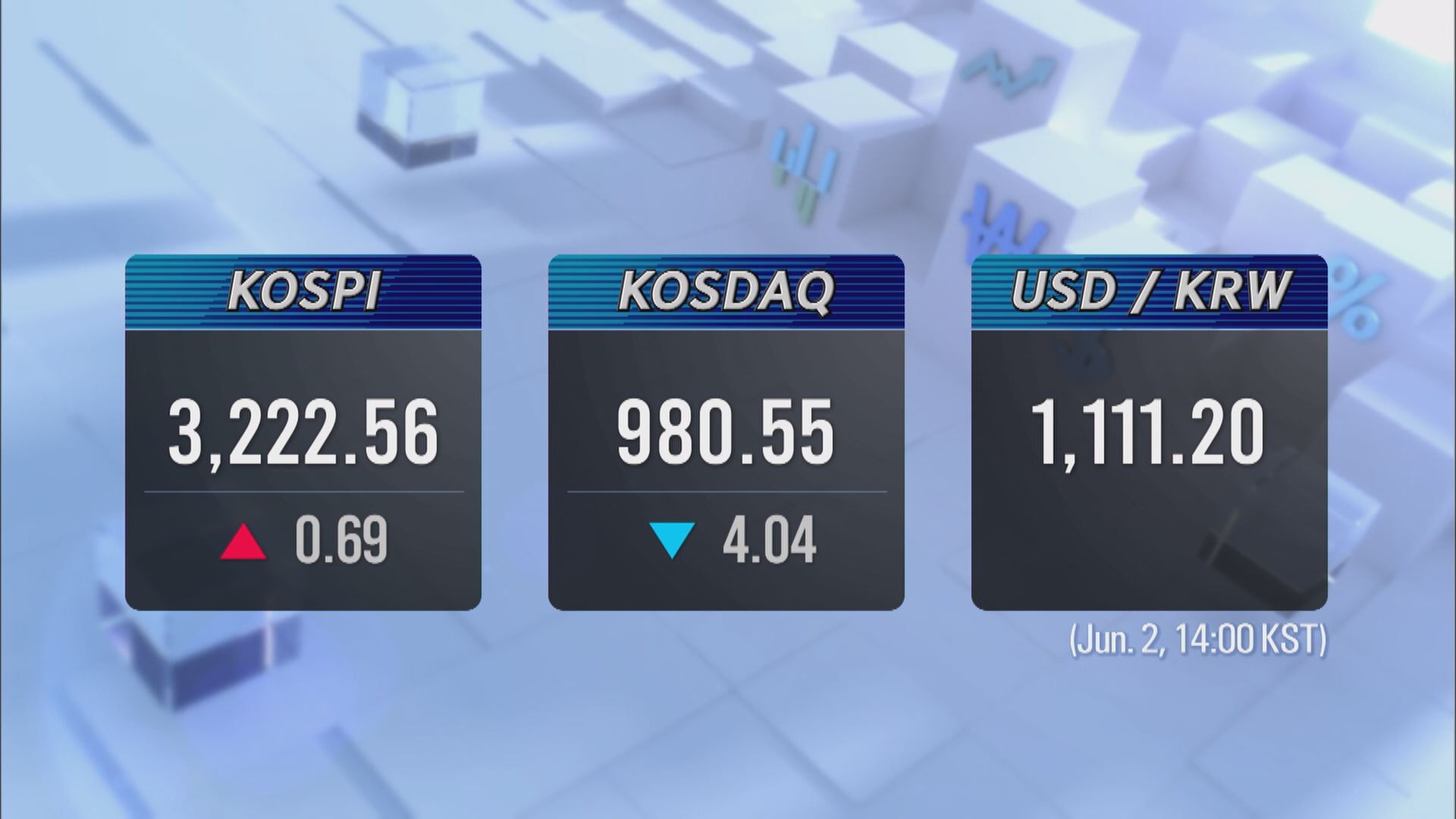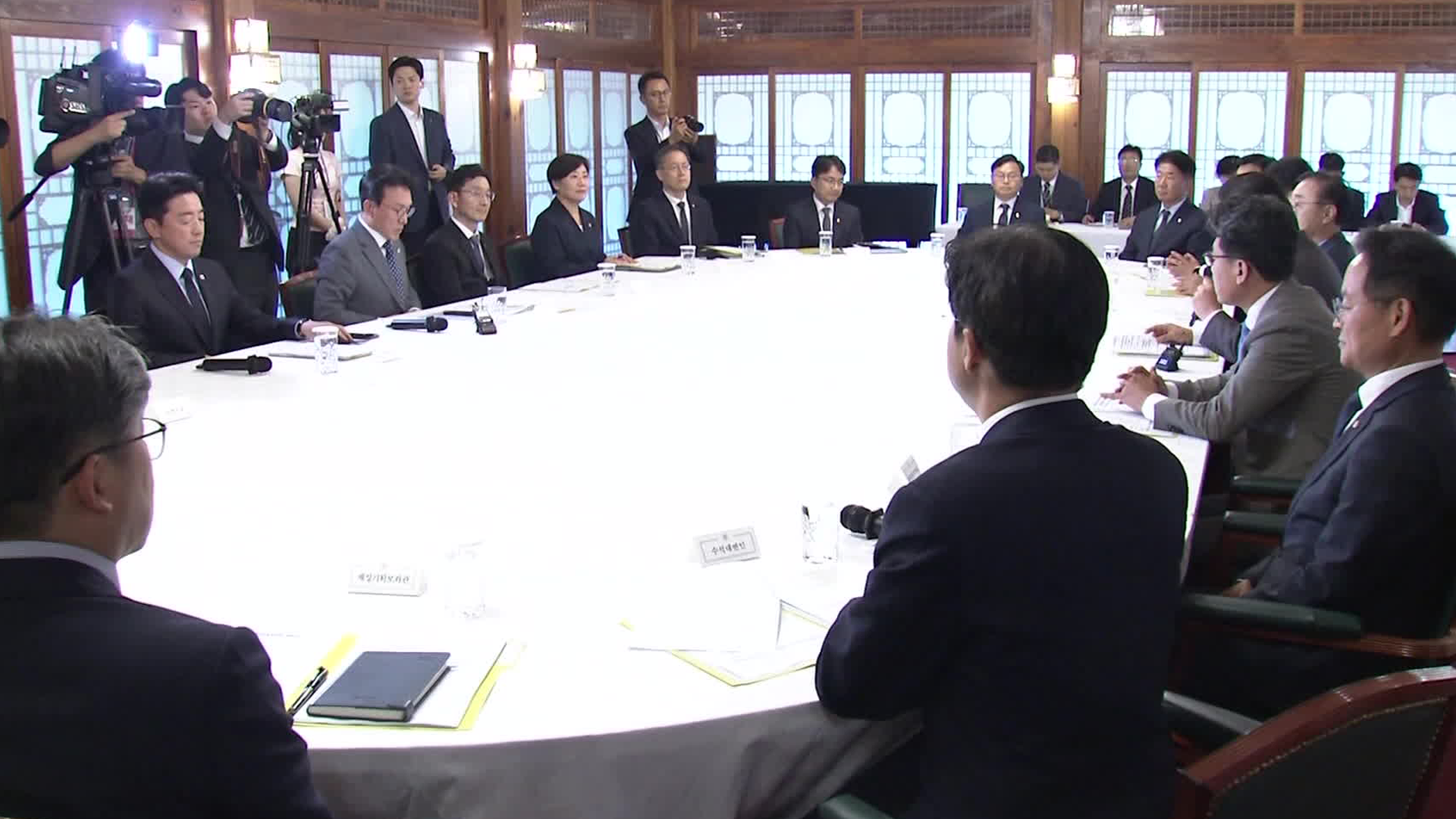SPACE ROCKET NURI UNVEILED
입력 2021.06.02 (15:30)
수정 2021.06.02 (16:46)
읽어주기 기능은 크롬기반의
브라우저에서만 사용하실 수 있습니다.
[Anchor Lead]
It’s been 8 years since South Korea launched its Naro space rocket using a Russian projectile in 2013. Based on that experience, efforts have continued to develop a homegrown space launch vehicle. And finally the efforts have come to fruition with the unveiling of Korea's first homemade space rocket named Nuri.
[Pkg]
The gate opens of the rocket assembly building. And Nuri exposes its grand form. It is the country’s first locally developed space launch vehicle. To minimize shock, Nuri is carried on a specially designed non-vibration transporter to move to a location just 1.8 kilometers away but the travel takes a slow 70 minutes. Then the rocket is erected on the launch pad. For the next month, tests will be conducted to verify the performance of the launch pad.
[Soundbite] Hwang Seong-hun(Ministry of Science and ICT) : "Starting with the erection, a total of 7 stages will be performed including mechanical checks, refueling and separation from the fixing equipment."
What was revealed Tuesday is a qualification model of the actual Nuri rocket that has the same shape and performance. This model will be used for the final rehearsals before the launch into orbit later this year. Compared to the Naro space rocket of 2013, Nuri is about 1.4 times longer and heavier. The payload limit is 15 times higher than the previous one, so the rocket can carry satellites. South Korea’s goal is to send a satellite to a height of 800 kilometers in low Earth orbit. Some 300 domestic firms have taken part in the development of Nuri since 2010 with a budget of nearly 2 trillion won.
[Soundbite] Go Jeong-hwan(Korea Aerospace Research Institute) : "The design, production and testing of a liquid rocket engine has been completed in the country for the first time. It’s significant that South Korea has secured homegrown space launch vehicle technology."
If the launch of Nuri is successful, South Korea will become the 7th country in the world to own a launch vehicle for a mid to large size liquid-propellant rocket engine. The plan is to have Nuri carry a total of 9 satellites into space by 2026. The first test bed for that plan is scheduled in October when Nuri will be launched for the first time.
It’s been 8 years since South Korea launched its Naro space rocket using a Russian projectile in 2013. Based on that experience, efforts have continued to develop a homegrown space launch vehicle. And finally the efforts have come to fruition with the unveiling of Korea's first homemade space rocket named Nuri.
[Pkg]
The gate opens of the rocket assembly building. And Nuri exposes its grand form. It is the country’s first locally developed space launch vehicle. To minimize shock, Nuri is carried on a specially designed non-vibration transporter to move to a location just 1.8 kilometers away but the travel takes a slow 70 minutes. Then the rocket is erected on the launch pad. For the next month, tests will be conducted to verify the performance of the launch pad.
[Soundbite] Hwang Seong-hun(Ministry of Science and ICT) : "Starting with the erection, a total of 7 stages will be performed including mechanical checks, refueling and separation from the fixing equipment."
What was revealed Tuesday is a qualification model of the actual Nuri rocket that has the same shape and performance. This model will be used for the final rehearsals before the launch into orbit later this year. Compared to the Naro space rocket of 2013, Nuri is about 1.4 times longer and heavier. The payload limit is 15 times higher than the previous one, so the rocket can carry satellites. South Korea’s goal is to send a satellite to a height of 800 kilometers in low Earth orbit. Some 300 domestic firms have taken part in the development of Nuri since 2010 with a budget of nearly 2 trillion won.
[Soundbite] Go Jeong-hwan(Korea Aerospace Research Institute) : "The design, production and testing of a liquid rocket engine has been completed in the country for the first time. It’s significant that South Korea has secured homegrown space launch vehicle technology."
If the launch of Nuri is successful, South Korea will become the 7th country in the world to own a launch vehicle for a mid to large size liquid-propellant rocket engine. The plan is to have Nuri carry a total of 9 satellites into space by 2026. The first test bed for that plan is scheduled in October when Nuri will be launched for the first time.
■ 제보하기
▷ 카카오톡 : 'KBS제보' 검색, 채널 추가
▷ 전화 : 02-781-1234, 4444
▷ 이메일 : kbs1234@kbs.co.kr
▷ 유튜브, 네이버, 카카오에서도 KBS뉴스를 구독해주세요!
- SPACE ROCKET NURI UNVEILED
-
- 입력 2021-06-02 15:30:04
- 수정2021-06-02 16:46:25

[Anchor Lead]
It’s been 8 years since South Korea launched its Naro space rocket using a Russian projectile in 2013. Based on that experience, efforts have continued to develop a homegrown space launch vehicle. And finally the efforts have come to fruition with the unveiling of Korea's first homemade space rocket named Nuri.
[Pkg]
The gate opens of the rocket assembly building. And Nuri exposes its grand form. It is the country’s first locally developed space launch vehicle. To minimize shock, Nuri is carried on a specially designed non-vibration transporter to move to a location just 1.8 kilometers away but the travel takes a slow 70 minutes. Then the rocket is erected on the launch pad. For the next month, tests will be conducted to verify the performance of the launch pad.
[Soundbite] Hwang Seong-hun(Ministry of Science and ICT) : "Starting with the erection, a total of 7 stages will be performed including mechanical checks, refueling and separation from the fixing equipment."
What was revealed Tuesday is a qualification model of the actual Nuri rocket that has the same shape and performance. This model will be used for the final rehearsals before the launch into orbit later this year. Compared to the Naro space rocket of 2013, Nuri is about 1.4 times longer and heavier. The payload limit is 15 times higher than the previous one, so the rocket can carry satellites. South Korea’s goal is to send a satellite to a height of 800 kilometers in low Earth orbit. Some 300 domestic firms have taken part in the development of Nuri since 2010 with a budget of nearly 2 trillion won.
[Soundbite] Go Jeong-hwan(Korea Aerospace Research Institute) : "The design, production and testing of a liquid rocket engine has been completed in the country for the first time. It’s significant that South Korea has secured homegrown space launch vehicle technology."
If the launch of Nuri is successful, South Korea will become the 7th country in the world to own a launch vehicle for a mid to large size liquid-propellant rocket engine. The plan is to have Nuri carry a total of 9 satellites into space by 2026. The first test bed for that plan is scheduled in October when Nuri will be launched for the first time.
It’s been 8 years since South Korea launched its Naro space rocket using a Russian projectile in 2013. Based on that experience, efforts have continued to develop a homegrown space launch vehicle. And finally the efforts have come to fruition with the unveiling of Korea's first homemade space rocket named Nuri.
[Pkg]
The gate opens of the rocket assembly building. And Nuri exposes its grand form. It is the country’s first locally developed space launch vehicle. To minimize shock, Nuri is carried on a specially designed non-vibration transporter to move to a location just 1.8 kilometers away but the travel takes a slow 70 minutes. Then the rocket is erected on the launch pad. For the next month, tests will be conducted to verify the performance of the launch pad.
[Soundbite] Hwang Seong-hun(Ministry of Science and ICT) : "Starting with the erection, a total of 7 stages will be performed including mechanical checks, refueling and separation from the fixing equipment."
What was revealed Tuesday is a qualification model of the actual Nuri rocket that has the same shape and performance. This model will be used for the final rehearsals before the launch into orbit later this year. Compared to the Naro space rocket of 2013, Nuri is about 1.4 times longer and heavier. The payload limit is 15 times higher than the previous one, so the rocket can carry satellites. South Korea’s goal is to send a satellite to a height of 800 kilometers in low Earth orbit. Some 300 domestic firms have taken part in the development of Nuri since 2010 with a budget of nearly 2 trillion won.
[Soundbite] Go Jeong-hwan(Korea Aerospace Research Institute) : "The design, production and testing of a liquid rocket engine has been completed in the country for the first time. It’s significant that South Korea has secured homegrown space launch vehicle technology."
If the launch of Nuri is successful, South Korea will become the 7th country in the world to own a launch vehicle for a mid to large size liquid-propellant rocket engine. The plan is to have Nuri carry a total of 9 satellites into space by 2026. The first test bed for that plan is scheduled in October when Nuri will be launched for the first time.
이 기사가 좋으셨다면
-
좋아요
0
-
응원해요
0
-
후속 원해요
0

















이 기사에 대한 의견을 남겨주세요.